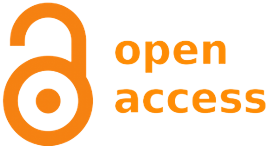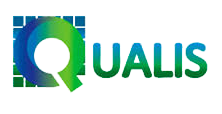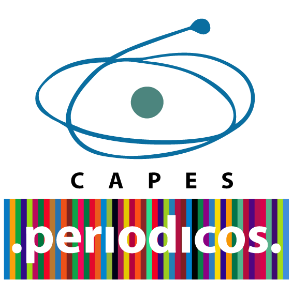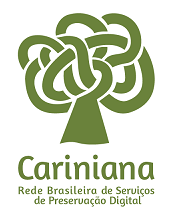Organizational structure and educational training of workers of Institute Euvaldo Lodi of Minas Gerais
DOI:
https://doi.org/10.5433/2317-4390.2017v6n1p135Keywords:
Educational background, Organization, Organizational structureAbstract
Introduction: The market increasingly competitive suffering with the great transformations has demanded the setting organizations in their internal structures, as well as better training and education worker training, stimulating the reflection and creativity. These changes force organizations to act on increasing production and offering more effective results that enable more competitive and innovative structures.Objective: This article aims to know the organizational structure of Euvaldo Lodi Institute of Minas Gerais (IEL / MG) and the level of educational training of their workers.
Methodology: Regarding the methodological parameter used the case study, qualitative approach and the adoption of semi-structured interview. The sample comprised 100% of managers headquartered in the city of Belo Horizonte and a coordinator in the staff of the Institute line. The meetings were scheduling in advance and integrally recorded and transcribed interviews.
Results: As the main result, the Institute has managers who are organized to assist in the expansion of competitiveness of Minas Gerais industry and seeking strengthen relations between technological actors. We observed that the higher the performance in complex, dynamic and vulnerable markets, the greater the requirement from services and products with added value, and individuals with multidisciplinary training, high level of educational training.
Conclusions: It is concluded that the organizational structure of IEL / MG is in consonance with its goal. The strongest areas are the Strategic Intelligence managements of Innovation and Business Stage for being part of the organizational environment longer. The Economics Studies management is loose in the structure of IEL and the best bond would be the next president of FIEMG; the management of Corporate Training has not clearly what will be its area, what products and services which will be the portfolio and what professional profiles that will be needed to carry out the activities for being the newest area in the Institute; International Centre for the management of business no matter where management is hierarchically subordinate, it is necessary infrastructure to facilitate the implementation of activities and the internal or external customer has needs and demands met.
Downloads
References
COELHO, A.; COELHO, F. As debilidades estruturais das organizações: o exemplo ibérico. Revista de Administração Contemporânea. ed. esp, p. 143-164. 2003.
DELUIZ, N. O modelo das competências profissionais no mundo do trabalho e na educação: implicações para o currículo. Boletim Técnico do SENAC. Rio de Janeiro, v.2, n.3, p.12-25, dez. 2001. Disponível em: http://www.senac.br/INFORMATIVO/BTS/273/boltec273b.htm. Acessado em:11 jul. 2014.
MACHADO-DA-SILVA, C. L.; FONSECA, V. S. Estruturação da estrutura organizacional: o caso de uma empresa familiar. Rev. Adm. Contemp, Curitiba, v.14, n. Especial, set. 2010. Disponível em: http://dx.doi.org/10.1590/S1415-65552010000600002. Acessado em 5 de jun. 2014.
O'DWYER, G.; MATTOS, R. A. Teoria da estruturação de Giddens e os estudos de práticas avaliativas. Rio de Janeiro, Physis, v. 20, n. 2, 2010.
OLIVEIRA, D. P. R. Sistemas, organização e métodos: uma abordagem gerencial. 18. ed. São Paulo: Atlas. 2009.
RODRIGUES, A. L. Tensões entre econômico e social: uma proposta de análise à luz da teoria da estruturação. Revista de Administração de Empresa, v. 48, n. 2, p. 37-50, abr./jun. 2008.
WOOD JR, T. Organizações de simbolismo intensivo. Revista de Administração de Empresas, v. 40, n.1, p.20-28, jan/mar. 2000.
YIN, R. K. Estudo de caso: planejamento e métodos. 3. ed. Porto Alegre: Bookman, 2005.
Downloads
Published
How to Cite
Issue
Section
License
Copyright (c) 2017 Informação@Profissões

This work is licensed under a Creative Commons Attribution 4.0 International License.
A revista se reserva o direito de efetuar, nos originais, alterações de ordem normativa, ortográfica e gramatical, com vistas a manter o padrão culto da língua e a credibilidade do veículo. Respeitará, no entanto, o estilo de escrever dos autores. Alterações, correções ou sugestões de ordem conceitual serão encaminhadas aos autores, quando necessário.
O conteúdo dos textos e a citação e uso de imagens submetidas são de inteira responsabilidade dos autores.
Os trabalhos publicados passam a ser propriedade da revista Informação& Profissões, ficando sua reimpressão total ou parcial sujeita a autorização expressa da revista. Em todas as citações posteriores, deverá ser consignada a fonte original de publicação, no caso a Informação&Profissões.












